Clancy Tucker's Blog, page 156
April 4, 2018
5 April 2018 - LEA ANN VANDYGRIFF - GUEST AUTHOR
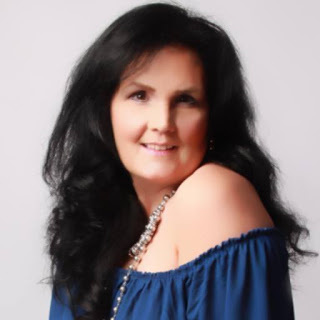
LEA ANN VANDYGRIFF - GUEST AUTHOR -
G'day folks,
Today, I interview a Christian fiction writer from Texas.
Welcome Lea Ann,
1. TELL US A LITTLE ABOUT YOURSELF AND YOUR WRITING JOURNEY.I lost my husband to cancer about three years ago. I am a single mom with two daughters. I have gone through many challenges over my lifetime. I am a Christian and strong in my faith. I write religious fiction. I wanted to write novels with inspiration and is also suitable for teen readers.
2. WHEN AND HOW DID YOU BECOME A WRITER?When my husband passed away, I had an overwhelming desire to write. I never knew writing was my destiny until for the first time in my life, I was making all the decisions for my family. I just could not shake the feeling to write. So now I have dedicated my career to writing and I love every minute.
3. WHAT TYPE OF PREPARATION DO YOU DO FOR A MANUSCRIPT? DO YOU PLAN EVERYTHING FIRST OR JUST SHOOT FROM THE HIP?As far as a plan, mine goes like this: I pray before I write, I become inspired and I start writing. If the writing is not flowing and I have too over think it, then I stop and take a break. My writing is more than just stories, for me it’s a ministry and I take it seriously.
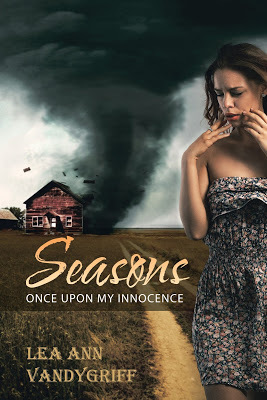
4. WHAT DO YOU ENJOY MOST ABOUT BEING A WRITER?I love the fact that I am sharing a piece of myself, my experiences and my faith. People are already asking about the second book and want to know if there is a movie. That means I touched a life and caused emotions in my readers. What a great feeling.
5. WHAT IS THE HARDEST THING ABOUT BEING A WRITER?Putting yourself and your work out there for the public. You can’t please everyone. There will always be someone out there who will rip up your dreams and hard work. The way I look at it is, If I can make a difference in just one life, then it’s all worth it. I’m pretty thick skinned.
6. WHAT WERE YOU IN A PAST LIFE, BEFORE YOU BECAME A WRITER?I was an executive legal assistant for 26 years. Not by choice, my husband and I started our own law office. There are too many things that I have accomplished and struggled through to mention. Some of those things will be revealed as the Seasons book series continues.
7. WHAT IS YOUR GREATEST WRITING ACHIEVEMENT?My debut book, Seasons Once Upon My Innocence. My hope is that is will be the first in a series of four books.
8. WHAT ARE YOU WORKING ON AT THE MOMENT?I am about half way through the second book Seasons Justice Is Not for the Weak. I am kicking around the idea of writing a screenplay for a TV series.
9. WHAT INSPIRES YOU?When I can inspire others, I get inspired.
10. WHAT GENRE DO YOU WRITE?I write Religious Fiction. I have had so many experiences in my life, good and bad. When my friends heard I was writing a book, they assumed it would be about my life and my faith. The fact is no one would believe one person could have been through everything I have. So, I started to write fiction from my wealth of knowledge. Lol. Guess the mystery is what parts of the novel are real and which are fiction?
11. DO YOU HAVE ANY TIPS FOR NEW WRITERS?Don’t force the story and don’t over think it. Have confidence in yourself and your abilities.
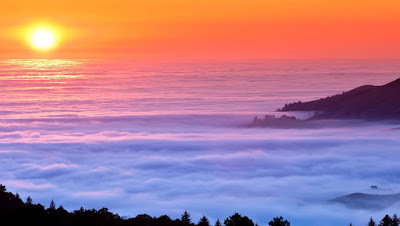
12. DO YOU SUFFER FROM WRITER’S BLOCK?No, on the contrary. I carry a notebook because ideas and storylines come to mind when I least expect it. I have ideas for other novels, books of encouragement, tv series and feature films. I am covered for the rest of my life lol
13. DO YOU HAVE A PREFERRED WRITING SCHEDULE?I do not, I have target times. A single mom with a teen at home, it is impossible to have a schedule I can keep. Some days I will write for hours straight and other days I just work on writing my blog entries and social media.
14. DO YOU HAVE A FAVOURITE WRITING PLACE?I do, my desk faces a big window with a beautiful view. I have music playing softly, a scented candle, puppy sleeping in my lap and birds chirping. Sounds like a lot of distraction right. Not for me, it’s were I do my best work.
15. WHAT IS YOUR GREATEST JOY IN WRITING?The joy for me is touching lives. I love to take the reader on an emotional journey. When I write, I don’t know exactly where the story is going until I write it. I like it when my writing is even a mystery to me. Lol.
16. WHO IS YOUR FAVOURITE AUTHOR AND WHY?I don’t really have a favourite author. I like to read books that will inspire me and get me thinking. I would say The Left Behind Series has to be the one that comes to mind. I could not put them down. I think I read every book in the series in record time.
17. WHAT’S THE GREATEST COMPLIMENT YOU EVER RECEIVED FROM A READER?I have heard that my book had some intense moments and the reader could feel the emotions. Another reader said “Did not see that coming, got me thinking.” Those are some of the responses I had hoped for when I was writing the book. The book has only been out just a few months. The actual press release and publicity campaign starts the end of February 2018. I hope my greatest compliment is yet to come.
18. WHAT WAS THE WORST COMMENT FROM A READER?It’s always hard to set-up the scene, backdrop and introduce the characters. The first chapter was a lot of getting to know the characters and describing the town. Once the reader got to the second chapter, they were attached to the characters and the real action started. The cool thing is the second book I don’t have to do that. We jump right into the action.
19. WRITERS ARE SOMETIMES INFLUENCED BY THINGS THAT HAPPEN IN THEIR OWN LIVES. ARE YOU?Of course, that is one of reasons I am writing the series Seasons. Much of my life is reflected in the book. However, it is fiction, so you will wonder how much is real and how much not. The series is going to take you through the seasons in my life or rather my fictional character.
20. OTHER THAN WRITING, WHAT ELSE DO YOU LOVE?I love everything Disney, my family has gone every year since 2004. This is my magical place. I love kids and animals. The laughter of friends and family.
21. DID YOU HAVE YOUR BOOK / BOOKS PROFESSIONALLY EDITED BEFORE PUBLICATION?Yes, don’t even try to do it yourself. You will miss something.
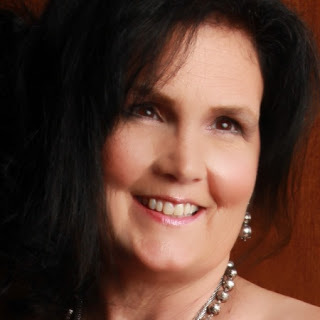
22. DESCRIBE YOUR PERFECT DAY.Fourth of July at Disneyworld, breakfast at Whispering Canyon, spending the day with the ones I love, laughing riding rides and watching shows. Early dinner at Beauty and the Beast Castle with a glass of wine. Dance party in the streets at Tomorrowland and finishing it off the night with the fireworks desert party.
23. IF YOU WERE STUCK ON A DESERT ISLAND WITH ONE PERSON, WHO WOULD IT BE? WHY?Someone who loves me and can make me laugh. Why, we are not meant to be alone.
24. WHAT WOULD YOU SAY IF YOU HAD THE CHANCE TO SPEAK TO WORLD LEADERS?We all come from one creator and we all bleed the same. When you die you can’t take any of the things you are fighting about with you. Dig deep in your heart, ask yourself are the petty things worth all the drama. Every moment you spend arguing, it’s a minute that is gone from your life.
25. WHAT ARE YOUR PLANS FOR THE FUTURE?To be a best-selling author and have my screenplays made into movies. Honestly, if those things happen that would be amazing! I am taking one day at a time and letting God guide my path.
26. WHAT ARE YOUR VIEWS ON BOOK TRAILERS? DO THEY SELL BOOKS?I think that some yes and some no. My publisher showed me samples of book trailers basically words on a screen and images of the book, music and some doves. I was not impressed. When they showed me mine, I was impressed, it had what looked like footage from a movie. I think if it is done right, it will help sale the book. Mine is on all my social media. I plan to have mine running at my booth at festivals.
27. DO YOU SEE YOURSELF IN ANY OF YOUR CHARACTERS?Yes, in Seasons Once Upon My Innocence, Aubree is based on myself. It is fiction so not everything that happened is real.
28. DOES THE PUBLISHING INDUSTRY FRUSTRATE YOU?I think I chose a good publisher. For the most part I have been pleased with them. I do think that there are certainly publishing companies that will leave you hanging and simply take your money. I prayed and researched, so I would chose the best publisher for my needs.
29. DID YOU EVER THINK OF QUITTING?I think everyone has doubts, but I have invested in myself and I know this is what I am called to do. I took a leap of faith and I plan on seeing it through. There is nothing fast about writing, publishing and marketing a book. Give it a chance.
30. WHAT WAS YOUR FAVOURITE MANUSCRIPT TO WRITE? WHY?Religious Fiction. I can share my faith and by being fiction I am only limited by my thoughts.

31. HOW WOULD YOU DEFINE ‘SUCCESS’ AS A WRITER. For me, if I caused you to feel emotion, connect with a character or think about life, then I would say that is successful.
32. WHAT SHOULD READERS WALK AWAY FROM YOUR BOOKS KNOWING? HOW SHOULD THEY FEEL?My hope is that by connecting with the characters in the book, they can learn to forgive and find comfort in Christ. Maybe they will learn even though you make a big mistake in your life doesn’t mean you are not worthy of being loved.
33. WOULD YOU LIKE TO HAVE YOUR BOOKS MADE INTO MOVIES? EVER WRITTEN A SCREENPLAY?Yes, my degree is in communications / film. I have taken a portion of my book Seasons Once Upon My Innocence and wrote a feature screenplay entitled Journey of Innocence Lost. It has currently been submitted to multiple screenwriting contest around the world.
34. HOW MUCH THOUGHT GOES INTO DESIGNING A BOOK COVER?Had a lot of help from my publisher. When you look on the shelf the first thing you see is the cover, if you are drawn to it, then you read the title. I wanted my book to give you a visual hint about what is happening inside. It did take a while to get it right.
35. WHAT’S YOUR ULTIMATE DREAM?To become a public figure so I can be an inspiration to others through a ministry of books, movies and speaking.
36. WRITING IS ONE THING. WHAT ABOUT MARKETING YOU, YOUR BOOKS AND YOUR BRAND? ANY THOUGHTS?I am self-published, I have a budget. Be careful, everyone thinks they have the perfect marketing plan for you, “for a price”. Research and make sure they can deliver what you need under budget.
37. ARE YOUR BOOKS SELF-PUBLISHED?Yes
38. DESCRIBE YOURSELF IN FIVE WORDS.Professional, encouraging, compassionate, independent and a Christian
39. WHAT PISSES YOU OFF MOST?Taking advantage and hurting my family.
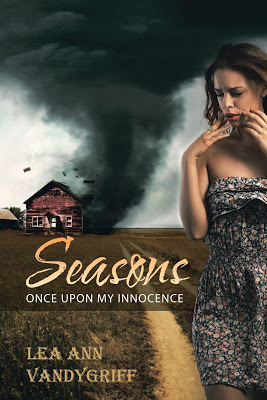
40. WHAT IS THE TITLE OF THE LAST BOOK YOU READ? GOOD ONE?Between Heaven and Hollywood by David White. I am doing my research. Being a Christian and writing religious novels and screenplays, I wanted to see what I’m up against.
41. WHAT WOULD BE THE VERY LAST SENTENCE YOU’D WRITE?Learn from your mistakes and live a good life so when you stand before God He will say “well done good and faithful servant.”
42. WHAT WOULD MAKE YOU HAPPIER THAN YOU ARE NOW? CARE TO SHARE?Knowing my children are happy, healthy and taken care of. Finding a wonderful Christian guy to share my life.
43. ANYTHING YOU’D LIKE TO ADD?One thing that is unique about my blog (leaannvandygriff.com) is that my main character “Aubree” in Seasons Once Upon My Innocence has journal entries. These entries will relate emotions, feelings and between the lines information not in the book itself. You can also send Aubree a message and there is a good chance she will respond to you.
The blog also has entries from myself. There is also a place for you to ask for a private prayer request and you can chose, to have me send a prayer back to you via email.
I am all about the interaction with my readers.
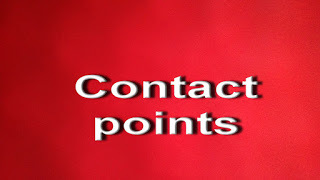
BOOK TRAILER
AMAZON
BLOG
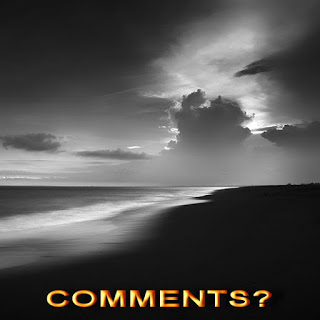
Clancy's comment: Thank you, Lea Ann. You've obviously had some trials and tribulations, but keep writing. Best wishes for top book sales.
I'm ...
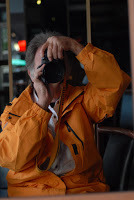

Published on April 04, 2018 16:17
April 3, 2018
4 April 2018 - MAN HAS COLLECTION OF 1200 MESSAGES IN BOTTLES WASHED UP ON BEACHES
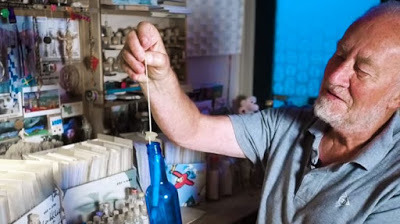
MAN HAS COLLECTION OF 1200 MESSAGES IN BOTTLES WASHED UP ON BEACHES
G'day folks,
Ever found a message in a bottle on a beach? Well, here is a man who collects them. Dutch beachcomber Wim Kruiswijk has amassed a collection of 1200 messages-in-bottles over the course of 34 years and has responded to almost all of them.
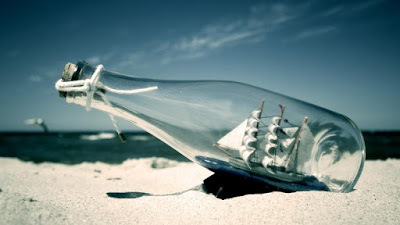
68-year-old Kruiswijk says that his unusual hobby began in 1983 when he found three bottles on his local beach, each containing letters and return addresses. He wrote to all three addresses and was surprised to receive responses from each one. It was this experience which sparked his interest in hunting and collecting messages in bottles, and he hasn’t stopped looking for them since.

“I find my messages in bottles on the beach of Zandvoort, where I live, and on the Dutch Islands,” Kruiswijk recently told Great Big Story. “Messages in bottles is slow mail. It takes you days, or weeks, or months to find a bottle.”
In the early years, Kruiswijk would find as many as 50 bottles a year, but since 2000 that has slowed to around 20-30 finds, mainly due to beach cleaning efforts. He believes that the rise of the internet has also played a role in the diminishing number of messages in bottles, telling Dutch news site PZC, “I used to get a response at half the bottle messages that I answered. Now that’s less; many people want ‘instant satisfaction.”’
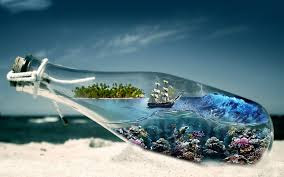
Kruiswijk is a retired bookkeeper, and it shows in his approach to minding his collection. The bottled messages, all 1,200 of them, are kept neatly sealed and filed in plastic folders. He only holds onto the unique bottles or packaging that wash up, such as lovely ornamental bottles or test tubes.
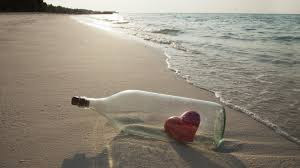
Throwing a message in a bottle out into the seas a longstanding human tradition dating back to the time of the Greek philosopher Theophrastus, circa 310 B.C., who used the bottles to study water currents. Scientists still apply the method to this day, as a means to help researchers develop ocean circulation maps, and to crowdsource scientific studies of ocean currents.

In the past bottles have also been used to send distress messages from stranded sailors. They also have been used for memorial tributes, or to send loved ones’ ashes on a final journey.
One of the more common uses though is just to send invitations out to prospective pen pals, a quaint notion in these modern times, but, as Kruiswijk so clearly demonstrates, an effective one.
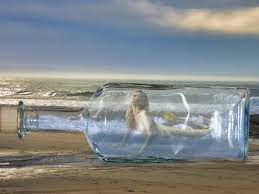
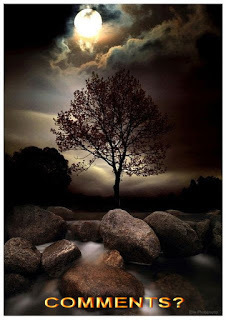
Clancy's comment: People collect all sorts of things, so why not messages in bottles? I was hoping to be in South East Asia for a few months, leaving at the end of April, so check your local beaches for a message from me.
"I'm ... On a desert island. Heeeeelp ..."


Published on April 03, 2018 14:08
April 2, 2018
3 April 2018 - THE ESKIMO DOG

THE ESKIMO DOG
G'day folks,
I hate the cold but I admire the likes of these dogs who seem to love it.
Eskimo Dog'stemperamentreflects its original work and environment. It is loyal, tough, brave, intelligent, and alert. It is affectionate and gentle, and develops a deep bond with its owner and is intensely loyal.

Canadian Eskimo Dogsare best suited as companions for adults, rather than children, as they can be over-excitable. When used as sled dogs, they were often required to forage and hunt for their own food.
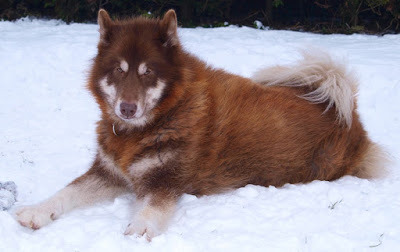
Consequently, many Canadian Eskimo Dogshave stronger preydrive than some other breeds. Owing to their original environment, they take pure delight in cold weather, often preferring to sleep outside in cold climates. Like most spitz breeds they can be very vocal.
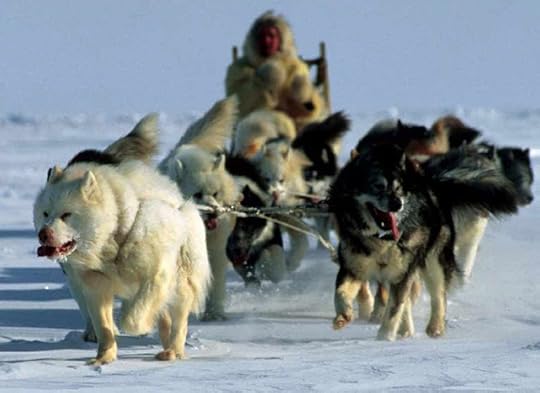
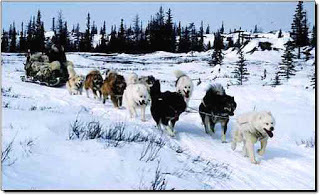
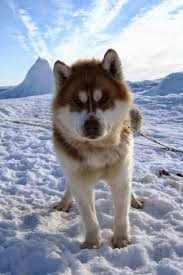


Clancy's comment: Tough strong and so loyal. Can't get better than that.
I'm ...


Published on April 02, 2018 14:18
April 1, 2018
2 April 2018 - Guglielmo Marconi (1874-1937)
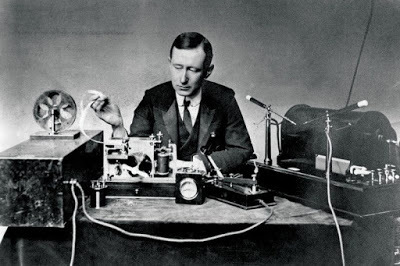
Guglielmo Marconi (1874-1937)
G'day folks,
Welcome to some background on another inventor with great passion.
Italian inventor and engineer Guglielmo Marconi (1874-1937) developed, demonstrated and marketed the first successful long-distance wireless telegraph and in 1901 broadcast the first transatlantic radio signal. His company’s Marconi radios ended the isolation of ocean travel and saved hundreds of lives, including all of the surviving passengers from the sinking Titanic. In 1909 he shared the Nobel Prize in Physics for his radio work.
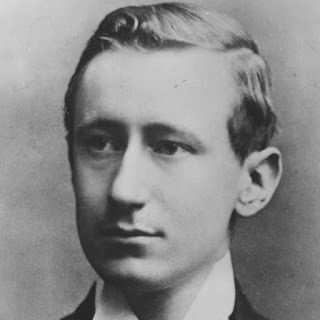
Guglielmo Marconi’s Early Years
Guglielmo Marconi was born in 1874 in Bologna, Italy. His father was a wealthy landowner and his mother was a member of Ireland’s Jameson family of distillers. Marconi was educated by tutors and at the Livorno Technical Institute and the University of Bologna.
In 1894 Marconi became fascinated with the discovery by German physicist Heinrich Rudolf Hertz of “invisible waves” generated by electromagnetic interactions. Marconi built his own wave-generating equipment at his family’s estate and was soon sending signals to locations a mile away. After failing to interest the Italian government in his work, Marconi decided to try his luck in London.
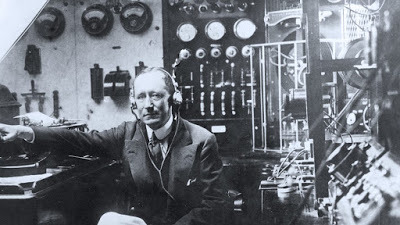
Guglielmo Marconi in England
The 22-year-old Marconi and his mother arrived in England in 1896 and quickly found interested backers, including the British Post Office. Within a year Marconi was broadcasting up to 12 miles and had applied for his first patents. A year later, he set up a wireless station on the Isle of Wight that allowed Queen Victoria to send messages to her son Prince Edward aboard the royal yacht.
By 1899 Marconi’s signals had crossed the English Channel. The same year, Marconi traveled to the United States, where he gained publicity offering wireless coverage of the America’s Cup yacht race from off the coast of New Jersey.
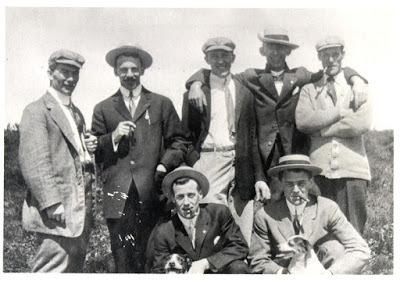
Guglielmo Marconi and the Transatlantic “S” Marconi began to work on improving his wireless for a transatlantic broadcast. Many physicists argued that radio waves traveled in straight lines, making it impossible for signals to be broadcast beyond the horizon, but Marconi believed they would follow the planet’s curvature. (In fact, the waves do travel in straight lines but bounce off the ionosphere, approximating a curve.) After failed attempts to receive a signal from England on Cape Cod, Massachusetts, Marconi decided to try a shorter distance, from Cornwall to Newfoundland.
The radio signal broadcast from Poldhu, Cornwall, was as powerful as Marconi’s team could make it—at full power, the equipment sent out sparks a foot long. Some 2,100 miles away, atop Signal Hill in St. John’s, Marconi attached an antenna first to a balloon, which blew away, and then to a kite on a 500-foot tether. On December 12, 1901, he picked up a faint three-dot sequence—the Morse Code letter “s.”
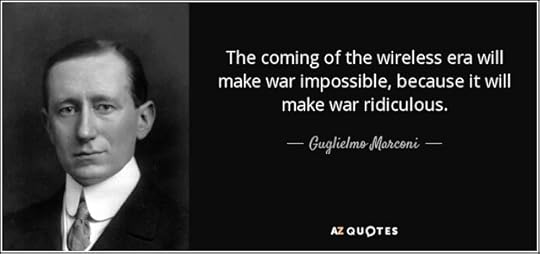
Guglielmo Marconi, the Nobel Prize and Titanic In 1909 Marconi shared the Nobel Prize in Physics with the German physicist Karl F. Braun, the inventor of the cathode ray tube. Marconi’s accolades were not without controversy: many other men had claims (some dubious, some not) to the “Father of Radio” title. As early as 1895, the Russian physicist Alexander Popov was broadcasting between buildings, while in India Jagdish Chandra Bose was using radio waves to ring bells and trigger explosions. In 1901 the Serbian-American electrical pioneer Nikola Tesla said he had developed a wireless telegraph in 1893; in 1943 the U.S. Supreme Court invalidated four Marconi radio patents, citing Tesla’s prior work.
As shipping companies realized the radio telegraph’s usefulness for passenger communication, navigation reports and distress signals, Marconi Company radios—operated by trained cadres of “Marconi Men”—became standard equipment. When RMS Titanicstruck an iceberg on April 14, 1913, its Marconi operator was able to summon RMS Carpathia to the scene to pick up 700 survivors.

Guglielmo Marconi’s Later Years and Legacy
For the next two decades, Marconi continued refining his inventions, experimenting with shortwave broadcasts and testing transmission distances aboard his 700-ton yacht, Elettra. He returned to Italy, became a supporter of Benito Mussolini and annulled his first marriage—to an Irish artist with whom he had four children—to wed an Italian noblewoman. In 1935 he toured Brazil and Europe defending Mussolini’s invasion of Abyssinia. He died two years later of a heart attack in Rome. In his honor, radio stations in America, England and Italy broadcast several minutes of silence.

Clancy's comment: Mm ... Not so sure about his quote above regarding war. Modern inventions and technology seem to have heightened war efforts wherever they are in the world. And, the end result is bloody gruesome.
I'm ...


Published on April 01, 2018 15:06
March 31, 2018
1 April 2018 - QUOTES FROM FAMOUS WRITERS AND AUTHORS

QUOTES FROM FAMOUS WRITERS AND AUTHORS
G'day folks,
Welcome to some famous quotes from other authors and writers. Let's hope they inspire some of you to keep writing.
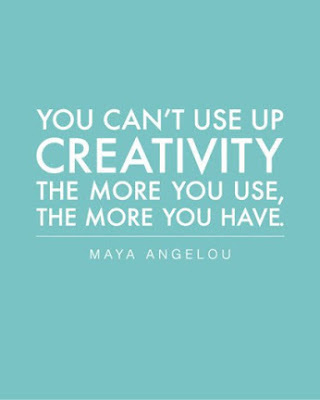
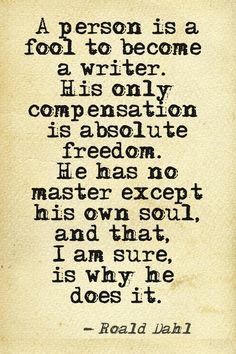
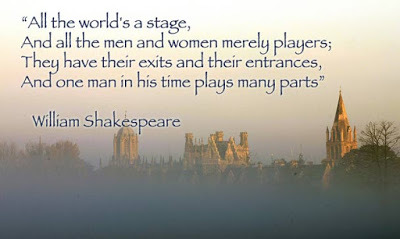
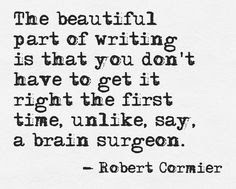
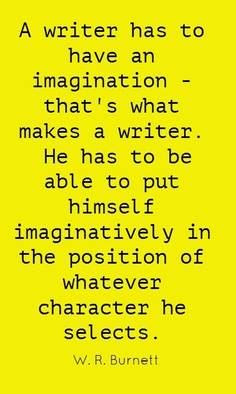

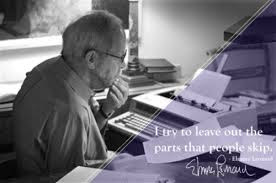
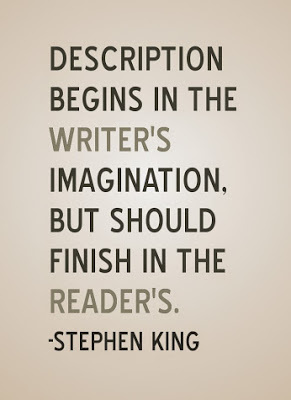
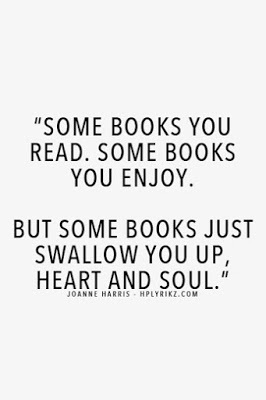
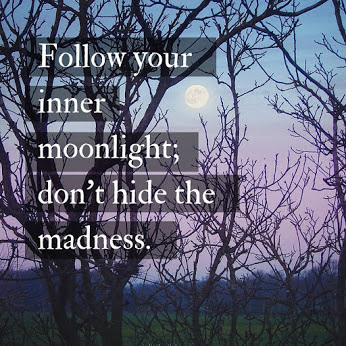
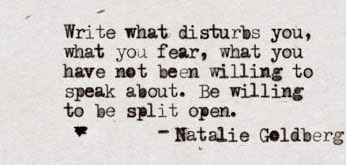
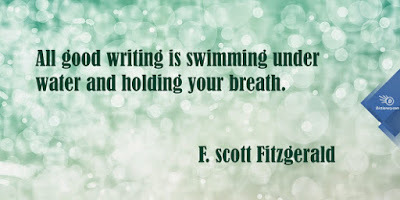

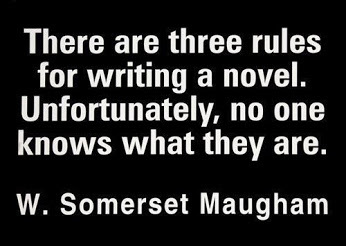
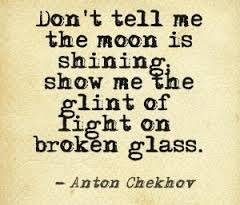

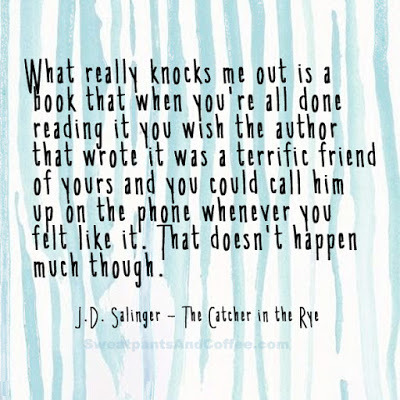

Clancy's comment: Mm ... Yep, you have to be very different to be a successful writer. Passion is essential.
I'm ...
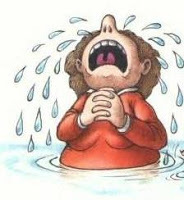

Published on March 31, 2018 15:30
March 30, 2018
31 March 2018 - PICTURES THAT MOVE
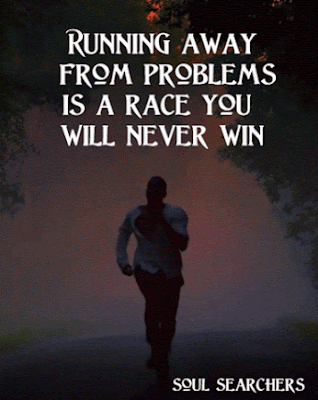
PICTURES THAT MOVE
G'day folks,
Welcome to some more of those pictures that move.


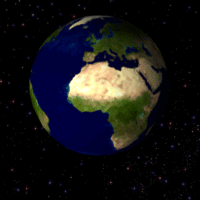
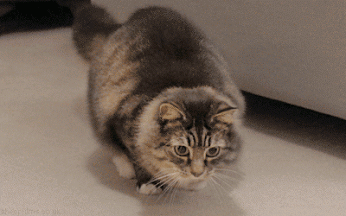


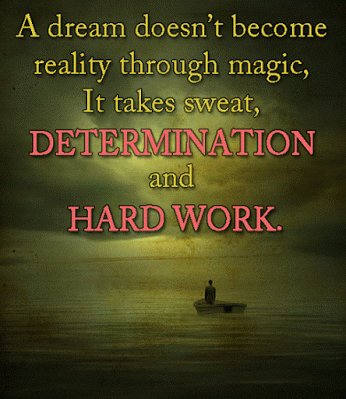
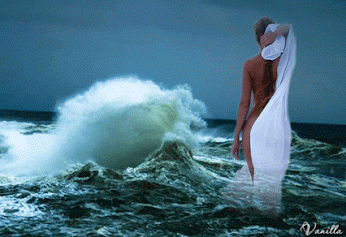
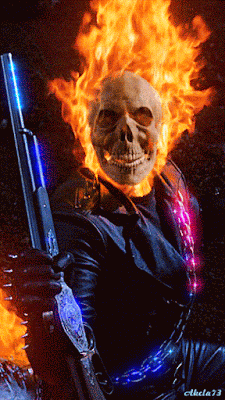



 Clancy's comment: Loved the canary, and I always smile at those tropical beaches.
Clancy's comment: Loved the canary, and I always smile at those tropical beaches.I'm ...


Published on March 30, 2018 14:45
March 29, 2018
30 March 2018 - NANCY PELOSI

NANCY PELOSI
G'day folks,
Welcome to some background on a central figure in US politics. Politician Nancy Pelosi became the first female Democratic leader of the House of Representatives and the first female speaker of the House.
Who Is Nancy Pelosi?
Born March 26, 1940, in Baltimore, Maryland, Nancy Pelosi continued her family's tradition of being involved in politics. She began as a volunteer and gradually moved up the ranks, making the leap to public office in a special election for California's Eighth District in 1987. She became the first female Democratic leader of the House of Representatives and the first female speaker of the House.

Early Life and Career
House Minority Leader Nancy Pelosi was born Nancy D'Alesandro on March 26, 1940, in Baltimore, Maryland. Pelosi carries on the family tradition of being involved in politics. Her father served in Congress and was the mayor of Baltimore for 12 years, and her brother Thomas later served as mayor of Baltimore as well.
Pelosi graduated from Trinity College in Washington, D.C., in 1962. While a student there, she met Paul Pelosi. The two later married and moved to San Francisco. They had five children: Nancy Corinne, Christine, Jacqueline, Paul and Alexandra.
Focused on raising her family, Pelosi got into politics slowly, starting out as a volunteer for the Democratic Party. She hosted parties and helped with campaigns. Pelosi rose up in the party ranks, serving as a California representative to the Democratic National Committee from 1976 to 1996. She also served as the state and northern chair of the California Democratic Party.
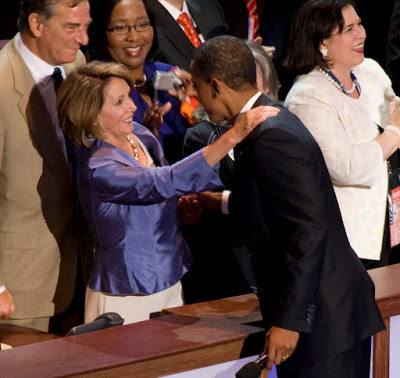
Entering Congress
In 1987, Pelosi made the leap to public office, winning a special election for California's Eighth District, which includes San Francisco. As a member of the House of Representatives, she has served on the Appropriations Committee and the Permanent Select Committee on Intelligence. Pelosi has been a strong supporter of increased funding for health research and for other health care and housing programs and initiatives. She is also an advocate for human rights and the environment.
Pelosi has emerged as one of the leading Democrats in Congress. In 2002, Pelosi was selected to be the Democratic leader of the House of Representatives, making her the first woman in history to do so. Four years later, she again broke new ground for women in U.S. politics. After the Democrats won majorities in both the House and the Senate in the 2006 midterm elections, Pelosi was chosen to become the first woman to take the post of speaker of the House.
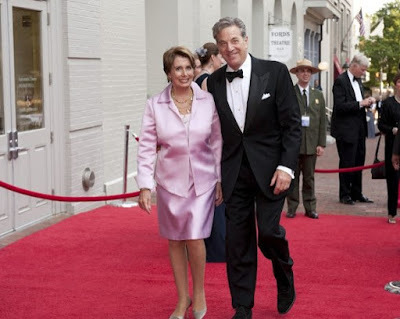
Speaker of the House
As the leader of the Democratic Party in the House under a Republican president, Pelosi was sometimes a divisive figure. A vocal critic of President George W. Bush's stance on the war in Iraq, she advocated for the withdrawal of troops from the region. Pelosi found herself at the center of a controversy in 2009, when the CIA asserted that she had been made aware of its use of waterboarding of terrorism suspects—a technique that Pelosi had vocally opposed. Pelosi denied the CIA's claims.
Pelosi lobbied for the development of better paying jobs, access to college education and affordable health care for all, and revised energy policy that focused on cleaner, more efficient domestic alternatives.
Shortly after winning the Speaker post, Pelosi enjoyed another personal highlight by becoming a grandmother for the sixth time: Her daughter, Alexandra, gave birth to a son, Paul Michael Vos, on November 13, 2006.
After the election of Barack Obama in 2008, Pelosi was in position to work with a president of the same party. She was instrumental in pushing for the health care reform legislation that became the Affordable Care Act (Obamacare) in 2010, a position that earned her more criticism from the GOP.

Minority Leader
Pelosi remained House speaker until November 2010, when Republicans gained control of the House and elected John Boehner to the role, relegating Pelosi to minority leader.
As the House's top Democrat, Pelosi endured criticism for her party's losses and challenges to her leadership. Ohio Congressman Tim Ryan sought to replace her as minority leader in 2016, but was unsuccessful.
On February 7, 2018, Pelosi delivered a marathon speech on the House floor to protest legislation that lacked protection for "Dreamers," the children of undocumented immigrants. Taking advantage of the "magic-minute rule," which allows House leaders to talk for as long as they want, Pelosi read testimonies from Dreamers and recited Bible passages, in all standing for some eight hours and seven minutes, a House record dating back to at least 1909.
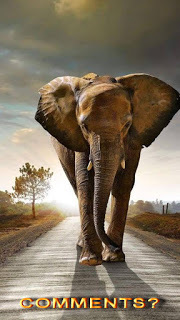
Clancy's comment: I always admire women who succeed in a 'men's club environment', no matter what their politics are. Go, Nancy!
I'm ...


Published on March 29, 2018 15:13
March 28, 2018
29 March 2018 - SOME GREAT QUOTES TO READ
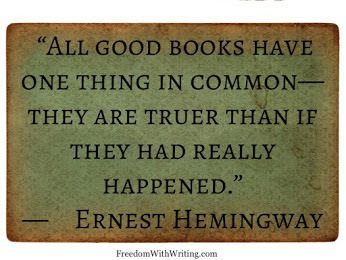
SOME GREAT QUOTES TO READ
G'day folks,
Time for some inspirational quotes ... And a touch of humour.
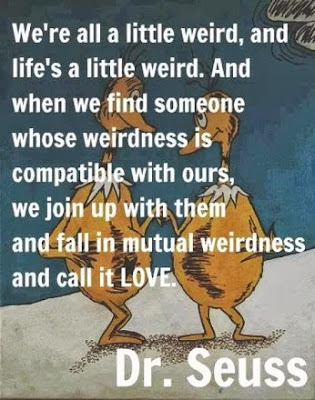
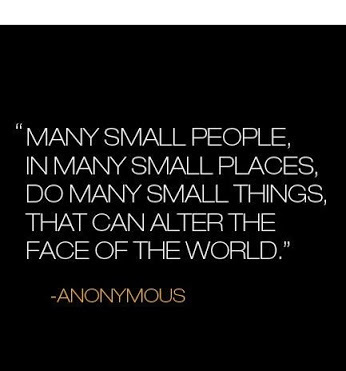

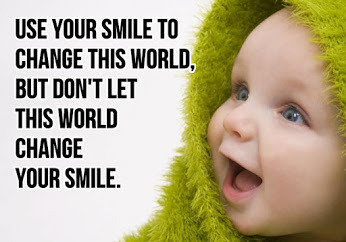

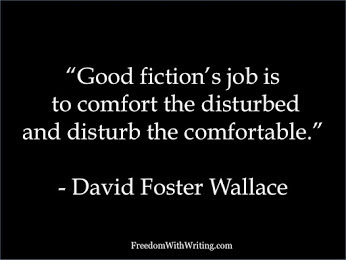


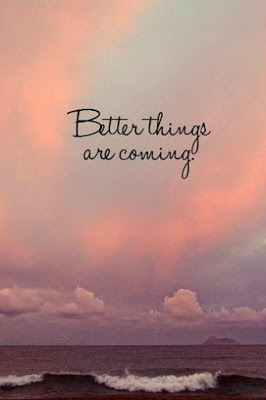
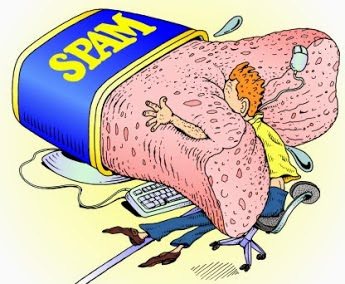

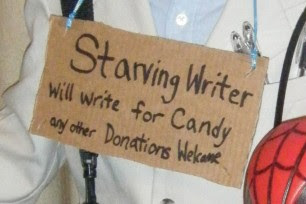
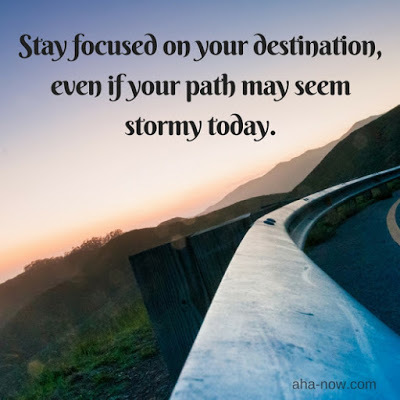
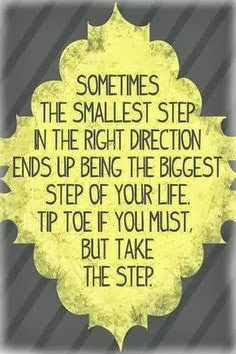
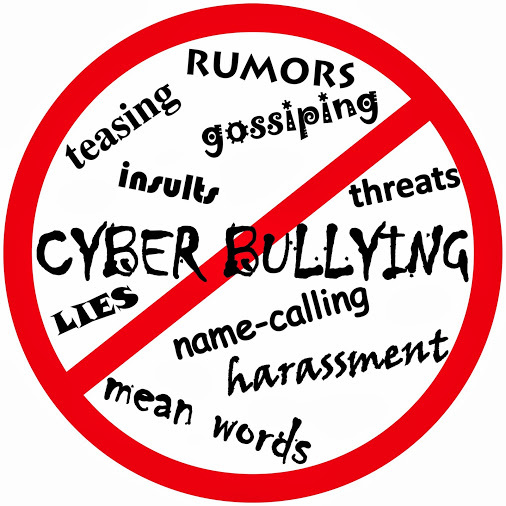

Clancy's comment: Mm ...
I'm ....


Published on March 28, 2018 17:58
March 27, 2018
28 March 2018 - THE AMAZING ELECTRIC EEL
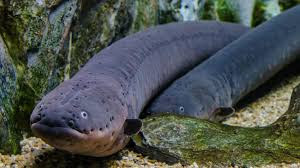
THE AMAZING ELECTRIC EEL
G'day folks,
Welcome to some facts about another marvellous creature that inhabits the earth.
Electric Eels are found in the waters of South America, and are capable of generating a 500volt electric shock through 28ft of still water. The shock that the electric eel produces is enough to harm any large mammal, including humans.
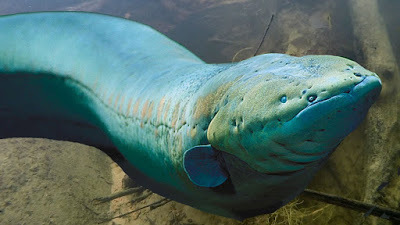
Electric eels can grow up to 2.5 metres and only need to surface for air every 10 minutes due to the eels complex circulatory system. Electric eels tend to live in muddy beds in calm water, eating fishand small mammals.
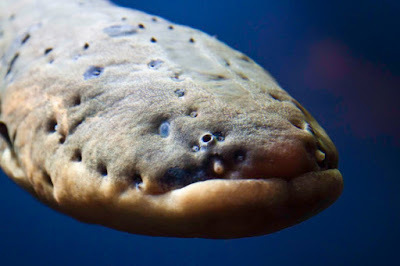
Despite the name electric eel, the electric eel is actually related most closely to a catfishand not the common eel fishand many electric eel adults tend to be smaller than their eel fishcounterparts.
The electricity that the electric eel uses to shock its prey, is produced in pairs of organsthat are found in the abdomen of the electric eel. These electricity producing organstake up around of 80% of the body of the electric eel leaving only 20% of the electric eels body free to hold the electric eels vital organsthat it needs to survive.
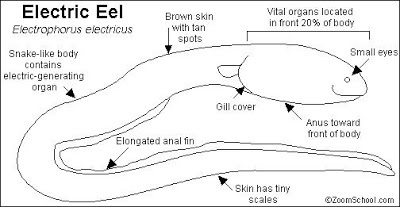
Electric eels are found inhabiting fresh waters of the Amazon and Orinoco river basins in South America, and the electric eels tend to prefer the river floodplains, swamps, coastal plains, and creeks. Electric eels tend to live on muddy bottoms in calm water and in stagnant arms of rivers, where the electric eel spends most of its time hunting.
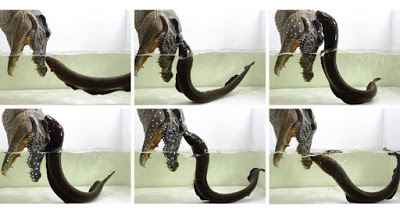
The electric eel is also known for its unusual breeding behaviour. In the dry season, a male electric eel makes a nest from his saliva into which the female electric eel lays her eggs. As many as 17,000 young electric eels will hatch from the eggs in one nest. These young electric eels feed mainly on invertebratesfound on the river bed, however, first-born baby electric eels have been known to gobble up the eggs from batches of other electric eels that were laid only a short time after themselves.
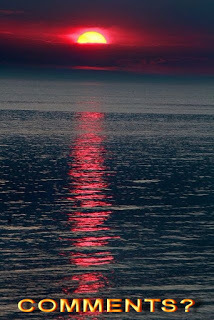
Clancy's comment: Ah, the marvels of nature, eh?
I'm ...
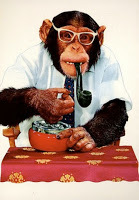
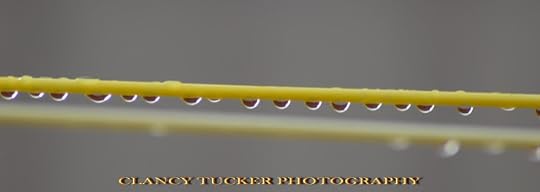
Published on March 27, 2018 14:59
March 26, 2018
27 March 2018 - THE INVENTION OF THE INTERNET

THE INVENTION OF THE INTERNET
G'day folks,
We all use it but do you know how it came to be? Unlike technologies such as the light bulb or the telephone, the Internet has no single “inventor.” Instead, it has evolved over time. The Internet got its start in the United States more than 50 years ago as a government weapon in the Cold War. For years, scientists and researchers used it to communicate and share data with one another. Today, we use the Internet for almost everything, and for many people it would be impossible to imagine life without it.
The Sputnik Scare
On October 4, 1957, the Soviet Union launched the world’s first manmade satellite into orbit. The satellite, known as Sputnik, did not do much: It tumbled aimlessly around in outer space, sending blips and bleeps from its radio transmitters as it circled the Earth. Still, to many Americans, the beach-ball-sized Sputnik was proof of something alarming: While the brightest scientists and engineers in the United States had been designing bigger cars and better television sets, it seemed, the Soviets had been focusing on less frivolous things—and they were going to win the Cold War because of it.

After Sputnik’s launch, many Americans began to think more seriously about science and technology. Schools added courses on subjects like chemistry, physics and calculus. Corporations took government grants and invested them in scientific research and development. And the federal government itself formed new agencies, such as the National Aeronautics and Space Administration (NASA) and the Department of Defense’s Advanced Research Projects Agency (ARPA), to develop space-age technologies such as rockets, weapons and computers.
The Birth of the ARPAnet
Scientists and military experts were especially concerned about what might happen in the event of a Soviet attack on the nation’s telephone system. Just one missile, they feared, could destroy the whole network of lines and wires that made efficient long-distance communication possible. In 1962, a scientist from M.I.T. and ARPA named J.C.R. Licklider proposed a solution to this problem: a “galactic network” of computers that could talk to one another. Such a network would enable government leaders to communicate even if the Soviets destroyed the telephone system.
In 1965, another M.I.T. scientist developed a way of sending information from one computer to another that he called “packet switching.” Packet switching breaks data down into blocks, or packets, before sending it to its destination. That way, each packet can take its own route from place to place. Without packet switching, the government’s computer network—now known as the ARPAnet—would have been just as vulnerable to enemy attacks as the phone system.

“LOGIN”
In 1969, ARPAnet delivered its first message: a “node-to-node” communication from one computer to another. (The first computer was located in a research lab at UCLA and the second was at Stanford; each one was the size of a small house.) The message—“LOGIN”—was short and simple, but it crashed the fledgling ARPA network anyway: The Stanford computer only received the note’s first two letters.

The Network Grows By the end of 1969, just four computers were connected to the ARPAnet, but the network grew steadily during the 1970s. In 1971, it added the University of Hawaii’s ALOHAnet, and two years later it added networks at London’s University College and the Royal Radar Establishment in Norway. As packet-switched computer networks multiplied, however, it became more difficult for them to integrate into a single worldwide “Internet.”
By the end of the 1970s, a computer scientist named Vinton Cerf had begun to solve this problem by developing a way for all of the computers on all of the world’s mini-networks to communicate with one another. He called his invention “Transmission Control Protocol,” or TCP. (Later, he added an additional protocol, known as “Internet Protocol.” The acronym we use to refer to these today is TCP/IP.) One writer describes Cerf’s protocol as “the ‘handshake’ that introduces distant and different computers to each other in a virtual space.”

The World Wide Web
Cerf’s protocol transformed the Internet into a worldwide network. Throughout the 1980s, researchers and scientists used it to send files and data from one computer to another. However, in 1991 the Internet changed again. That year, a computer programmer in Switzerland named Tim Berners-Lee introduced the World Wide Web: an Internet that was not simply a way to send files from one place to another but was itself a “web” of information that anyone on the Internet could retrieve. Berners-Lee created the Internet that we know today.
Since then, the Internet has changed in many ways. In 1992, a group of students and researchers at the University of Illinois developed a sophisticated browser that they called Mosaic. (It later became Netscape.) Mosaic offered a user-friendly way to search the Web: It allowed users to see words and pictures on the same page for the first time and to navigate using scrollbars and clickable links. That same year, Congress decided that the Web could be used for commercial purposes. As a result, companies of all kinds hurried to set up websites of their own, and e-commerce entrepreneurs began to use the Internet to sell goods directly to customers. More recently, social networking sites like Facebook have become a popular way for people of all ages to stay connected.

Clancy's comment: Thank God it's here. It's my office, and without it I wouldn't be sending this to you guys.
I'm ...
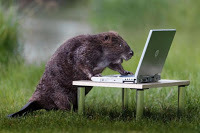

Published on March 26, 2018 15:24



